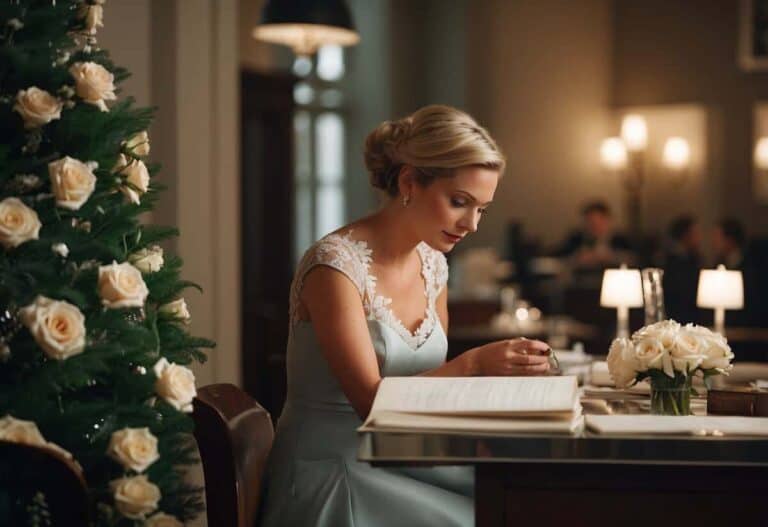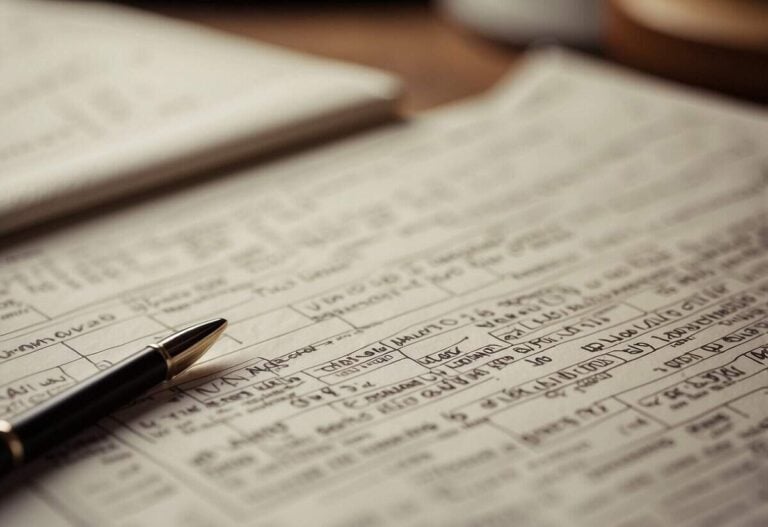Wedding Dress Alterations Tips: A Guide to Perfect Fit
Preparing for your wedding is an exciting journey, and finding the perfect dress is a huge part of it. But even the dreamiest dress might need some tweaking to fit you just right. How can you make sure your wedding dress alterations go smoothly and leave you with a flawless fit?
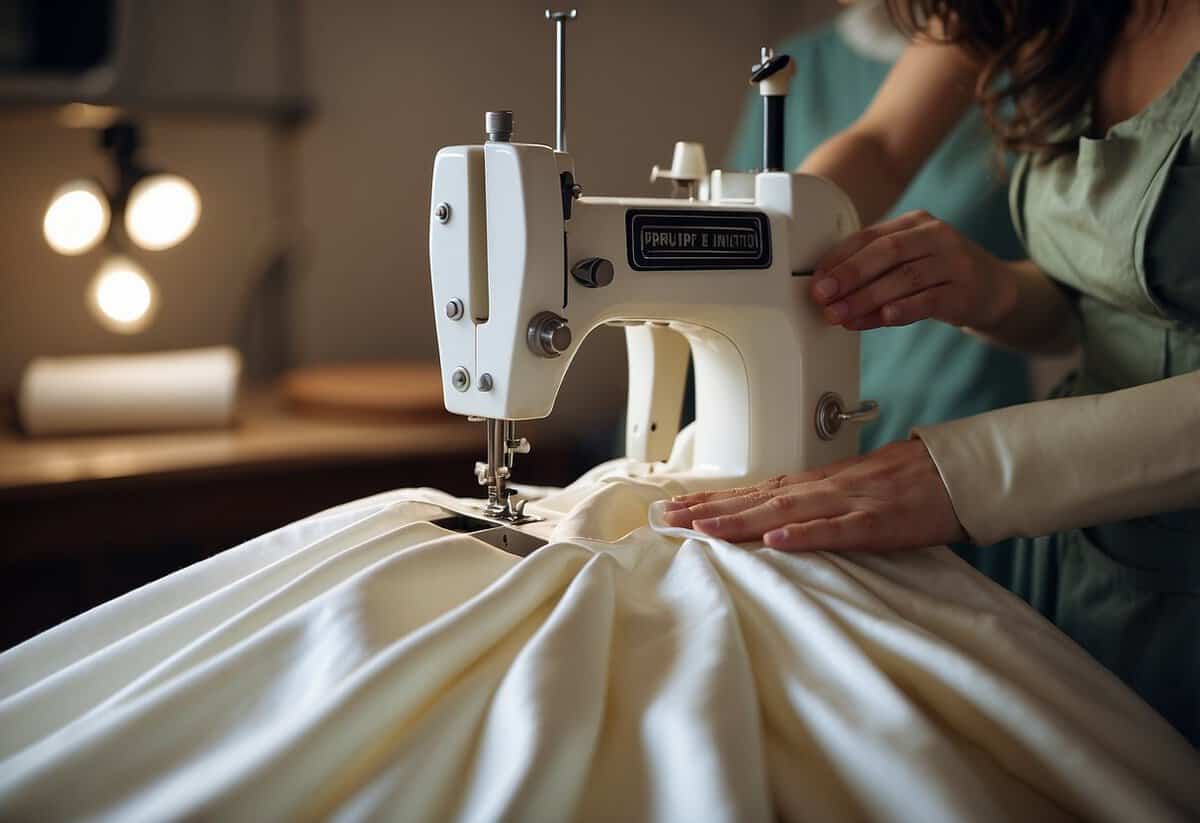
In this article, you’ll find essential tips to help you navigate the alteration process with ease. From timing and scheduling to choosing the right tailor, we’ll cover everything you need to know to ensure your dress looks perfect on your special day.
1) Schedule Early Fittings

It’s important to schedule your wedding dress fittings early. Start the alterations process about two to three months before your wedding day.
Buying your dress in advance is crucial. Aim to have your gown ready about ten months before the big day.
Scheduling a fitting two to three months before your wedding allows ample time for adjustments without last-minute stress.
2) Bring Your Wedding Shoes
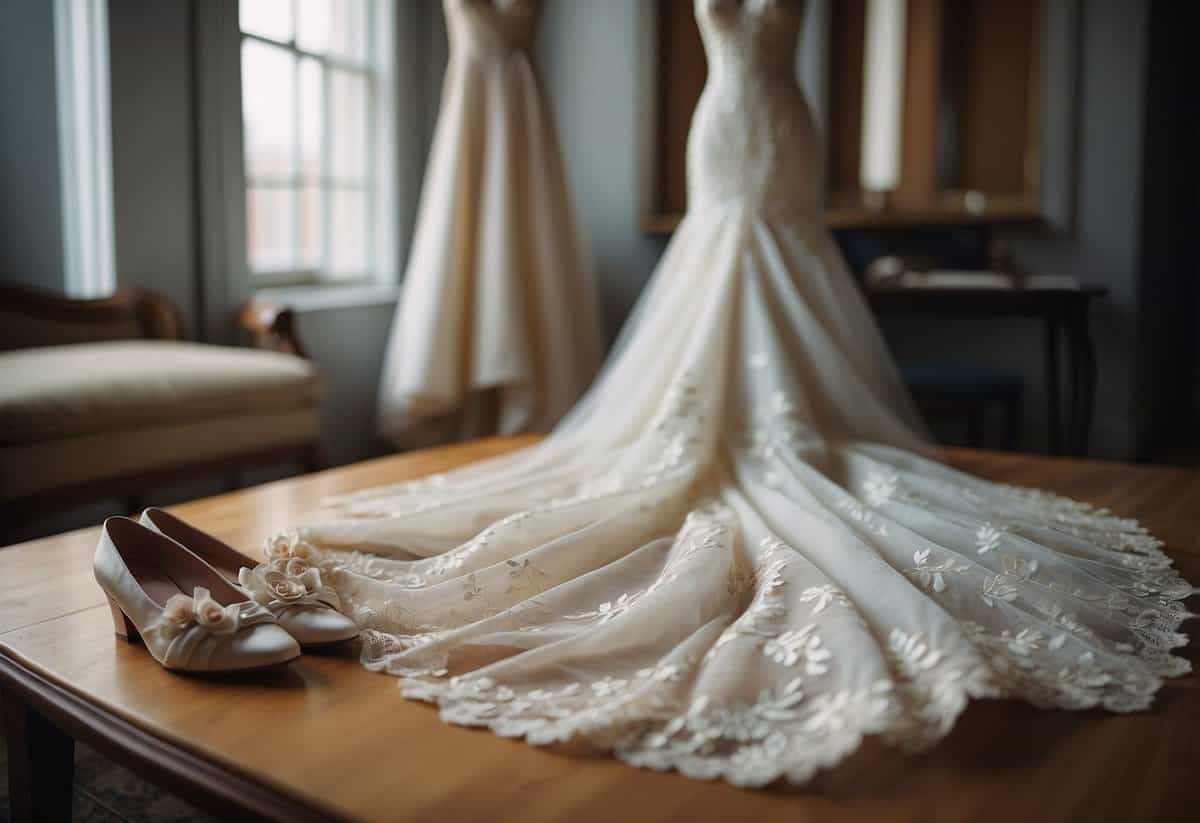
When going in for your wedding dress alterations, make sure you bring the shoes you plan to wear on your big day.
Wearing your actual wedding shoes helps the tailor see how the dress falls and ensures the hem is the right length.
If your shoes aren’t ready yet, bring a pair with a similar heel height. This will give your tailor a good idea of the final look.
Getting the length right is key to avoiding tripping and ensures your dress looks perfect for your big moment.
3) Wear Proper Undergarments
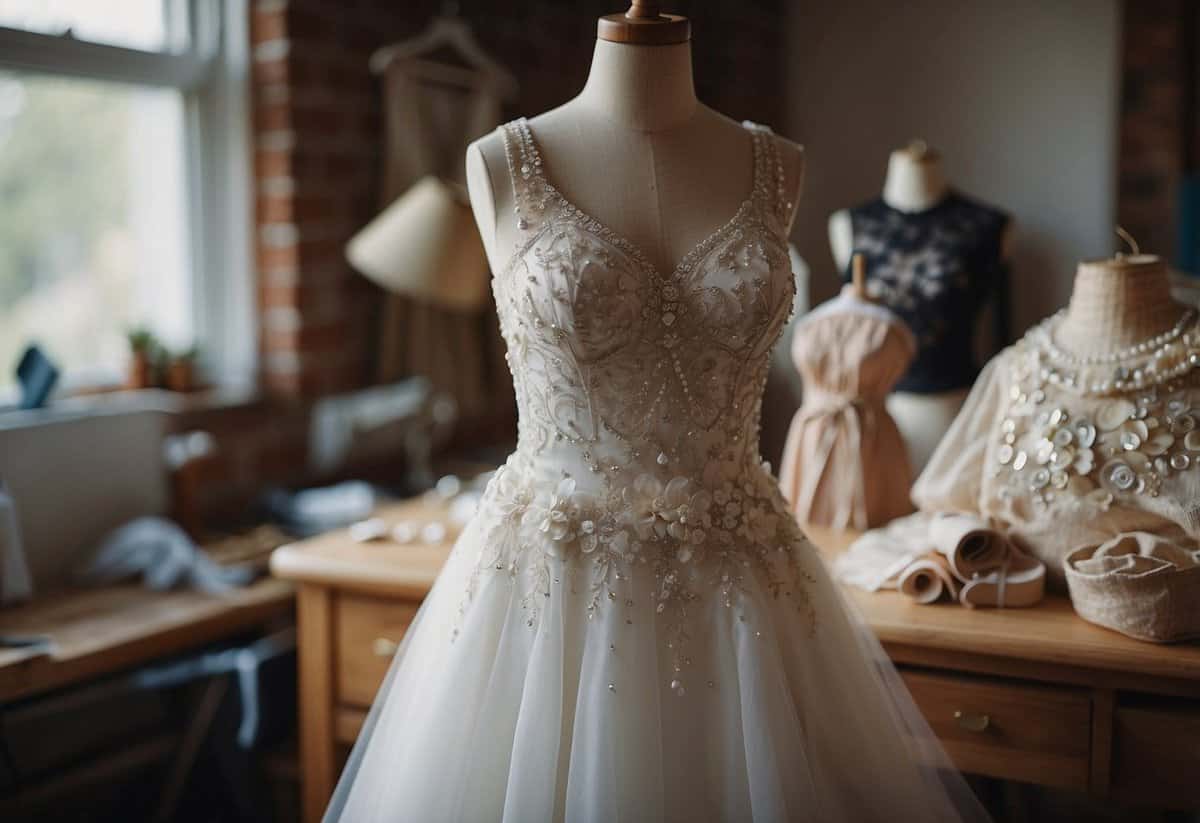
Wearing the right undergarments is key for wedding dress alterations. It will help the dress fit properly and ensure comfort throughout your big day.
Bring the bra, slip, or shapewear you plan to wear on your wedding day to every fitting. This will impact how the dress fits and feels.
Natural and neutral tones work best. They won’t show through the fabric. Avoid brightly colored undergarments to keep attention on your beautiful gown.
4) Communicate Fit Preferences Clearly
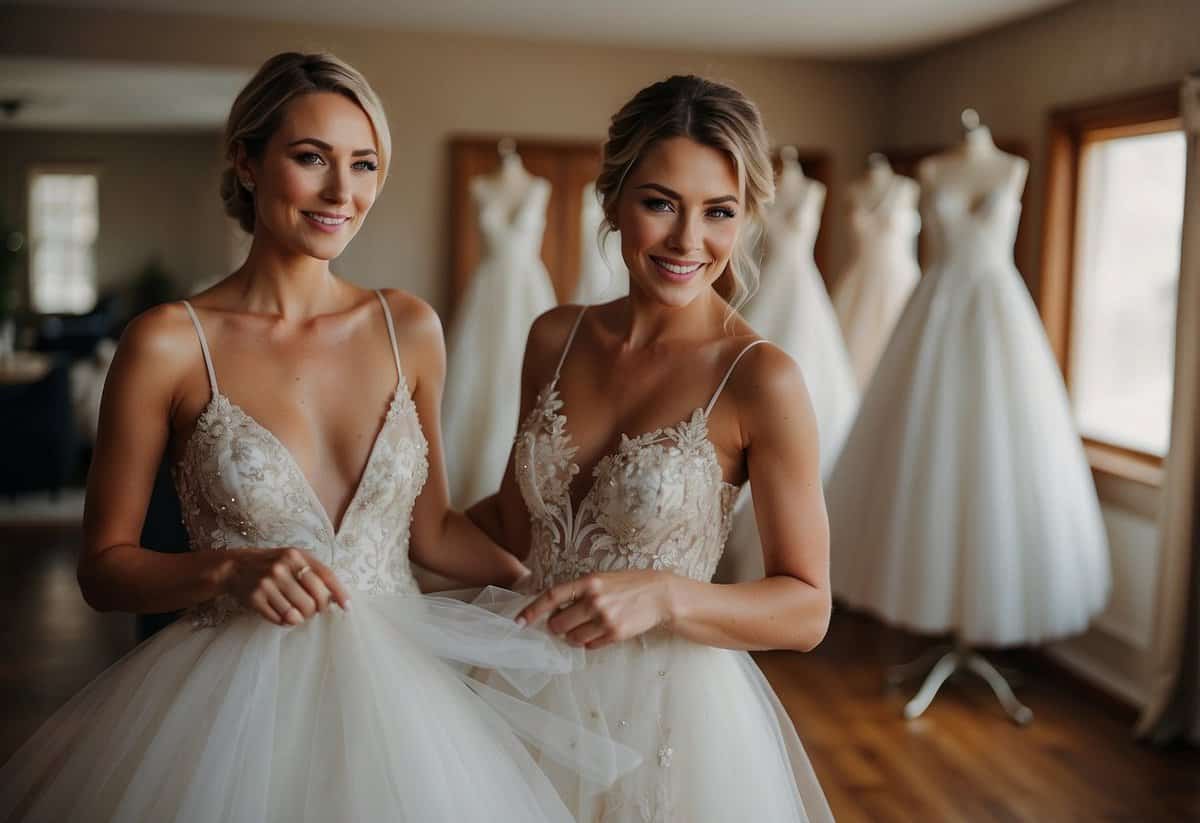
When it comes to your wedding dress, clear communication is key.
Before your fitting, think about how you want the dress to fit. Do you prefer a snug bodice or something with more room to move? Make notes about these preferences.
Share specific details with your seamstress. Let her know if you want the hem higher or if the sleeves feel too tight.
Don’t be afraid to ask questions. If you’re unsure about something, ask for recommendations to ensure the fit is perfect for you.
Remember, it’s your dress, and it should fit how you envision it.
5) Bring a Trusted Friend
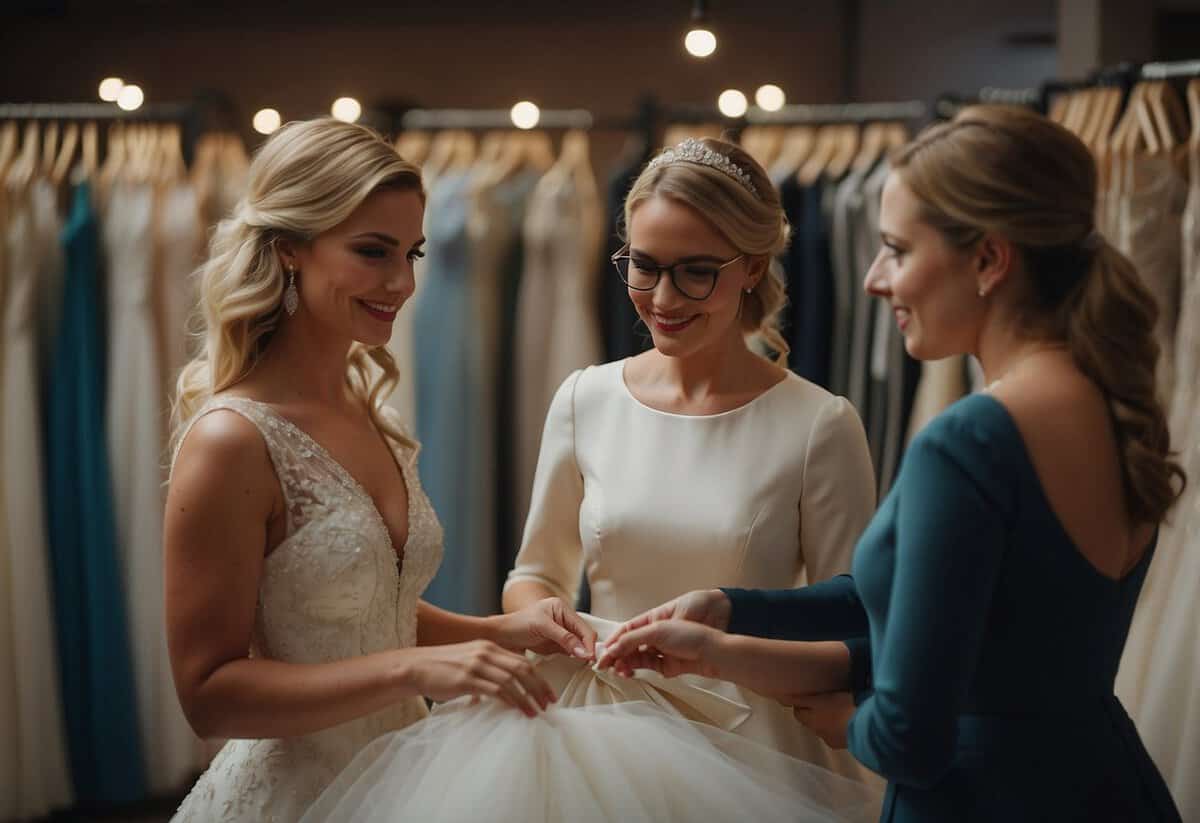
Bringing a trusted friend or family member to your wedding dress fittings can be very helpful. They can offer honest opinions and moral support, which makes the process a lot easier.
Having someone you trust by your side can make decision-making less stressful. They can also help you see things you might miss.
Their presence can turn fittings into a fun experience. They can share in the joy of seeing your dress come together perfectly.
6) Consider Dress Bustling Options
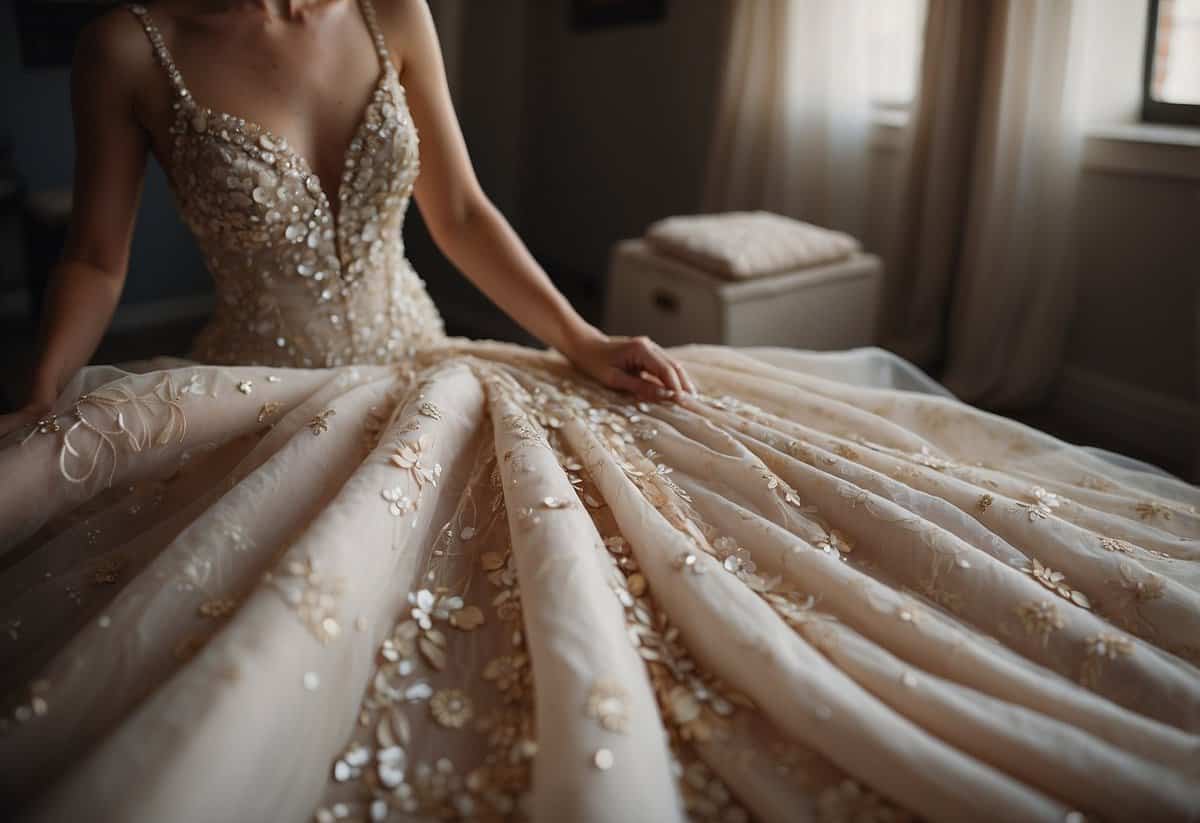
Choosing the right bustle for your wedding dress is important. It keeps your dress looking beautiful and prevents the train from dragging.
One popular option is the American (Over) Bustle. It lifts the train and hooks it onto the back of your gown.
Another choice is the Ballroom Bustle. This style hides the train under the dress, making it look like you have a shorter dress.
The Train-Flip Bustle flips the train underneath and pins it inside the dress. This creates a sleek look with no visible bustle.
Each style works well with different types of gowns. Talk to your seamstress about which bustle is best for your dress.
7) Plan for Accessories Fitting

Bring your wedding shoes and accessories to each fitting. This includes veils, jewelry, and any special undergarments. These items can affect the fit and appearance of your dress.
Shoes are especially important because they impact the length of the gown. You want everything to look perfect together, so having all the pieces at the fitting helps your tailor make precise adjustments.
It’s also a good idea to see how your dress looks with your accessories in advance. This lets you make any necessary changes before the big day. By planning ahead, you’ll ensure a seamless and stunning bridal look.
8) Don’t Overlook Hem Length
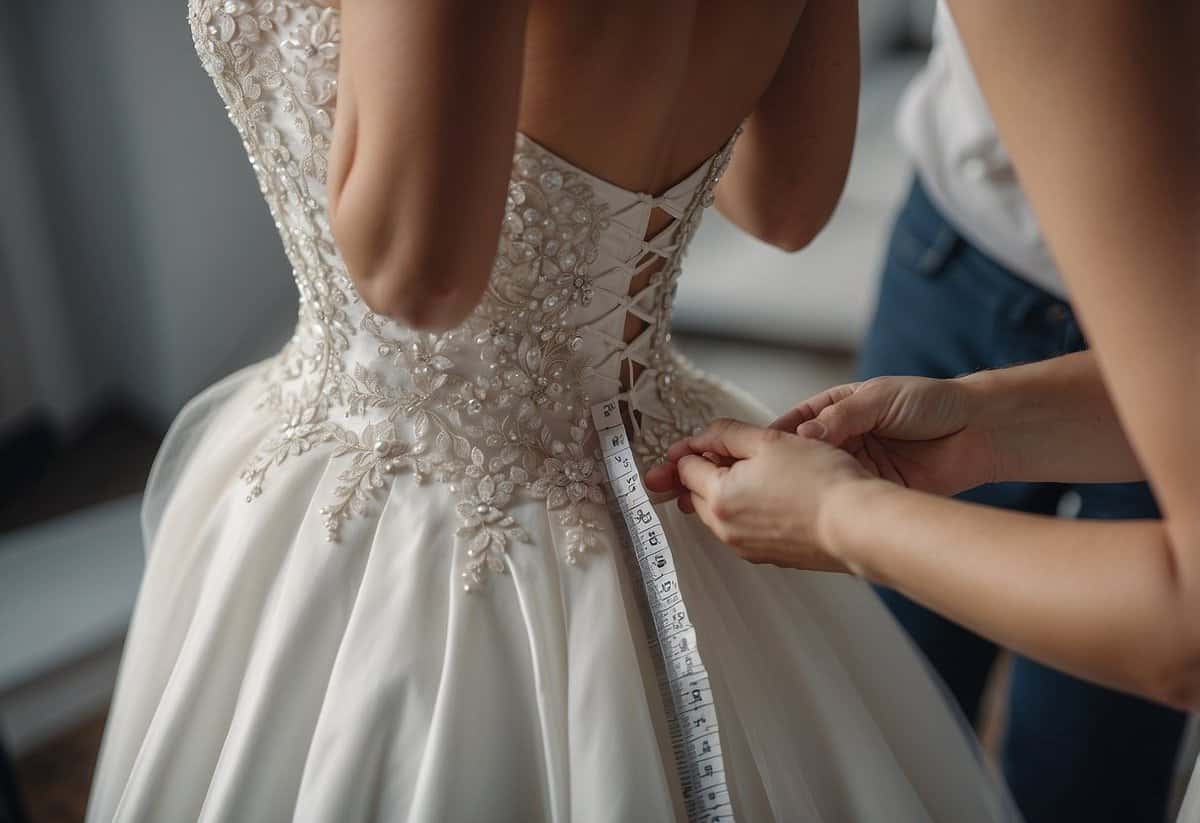
The length of your wedding dress hem is super important. It can affect how you walk and how the dress looks in photos.
For most dresses, the hem should just graze the floor. This helps you move easily without tripping.
Remember, your shoes matter too. Bring the shoes you plan to wear for your fittings. This will help get the hem just right.
Lastly, different dress styles need different hem lengths. For fitted or sheath styles, a floor-grazing hem is best. Stay mindful of this detail to ensure your dress looks perfect on your big day.
9) Account for Weight Changes
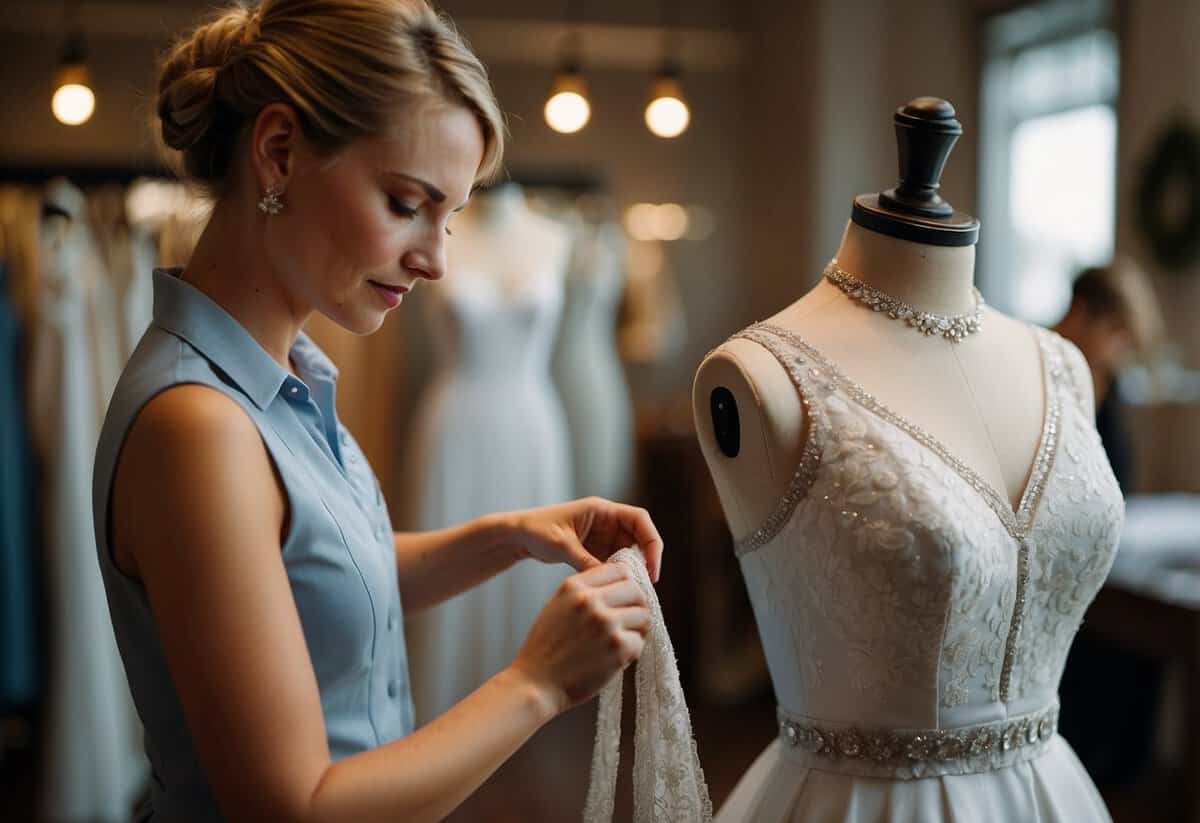
When planning for your wedding dress alterations, think about any changes in your weight. It’s common to lose or gain weight before the big day.
Order a dress that fits your body size at the time of purchase. It’s easier to take in a dress than to let it out.
Structured gowns with built-in corsets can offer some flexibility. Designers can often adjust the bust size if needed, which is a helpful feature.
Consider choosing an A-line dress. This style is more forgiving, accommodating slight weight changes without compromising the fit.
Stay as close to your “wedding weight” as possible by the first fitting to minimize unexpected alterations.
10) Budget for Multiple Fittings
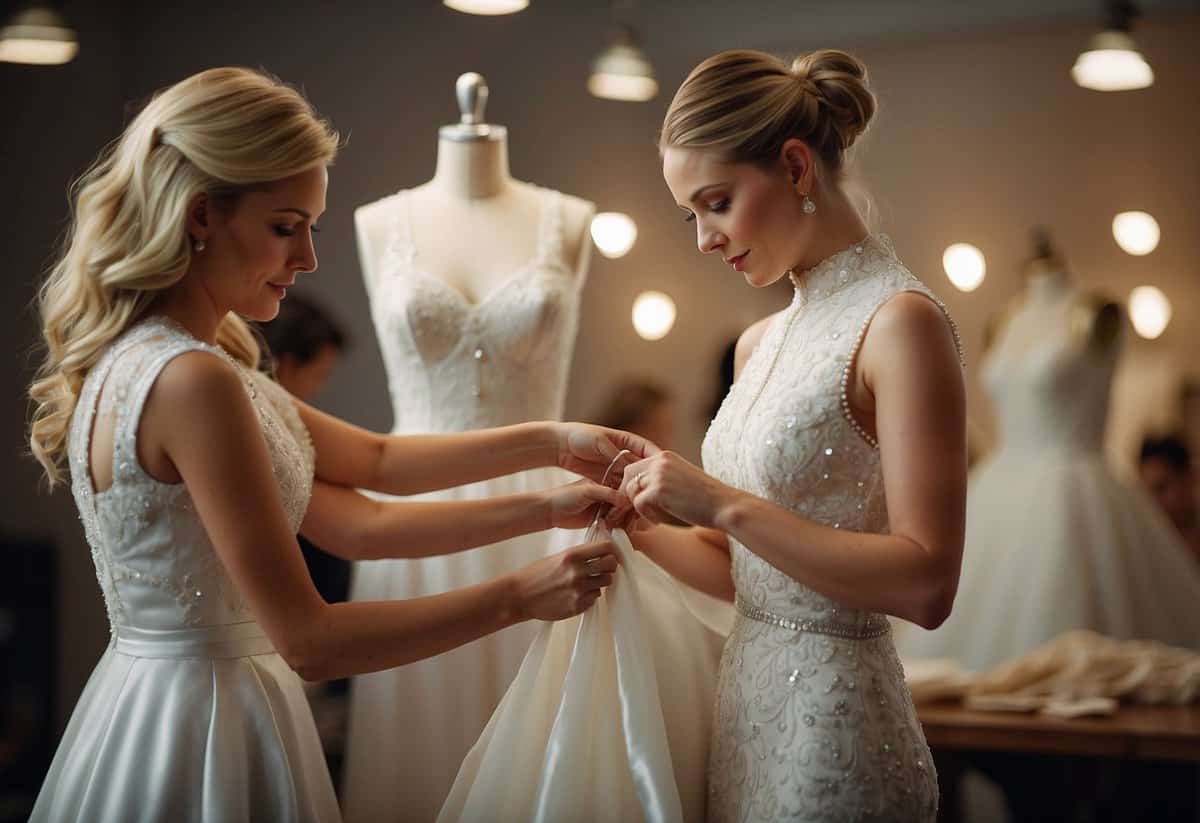
When planning for your wedding dress alterations, it’s essential to budget for multiple fittings. These fittings ensure your dress fits perfectly on your big day.
Setting aside money for three or more fittings can help you avoid stress later. Dresses often need adjustments as your wedding day approaches.
Remember, some fittings might reveal new tweaks needed, especially if your dress has intricate details like lace or beading. Prepare for these additional costs in your budget.
Being ready for multiple fittings means you get the best fit possible. It’s a small price to pay for looking and feeling your best as you walk down the aisle.
Understanding Wedding Dress Alterations
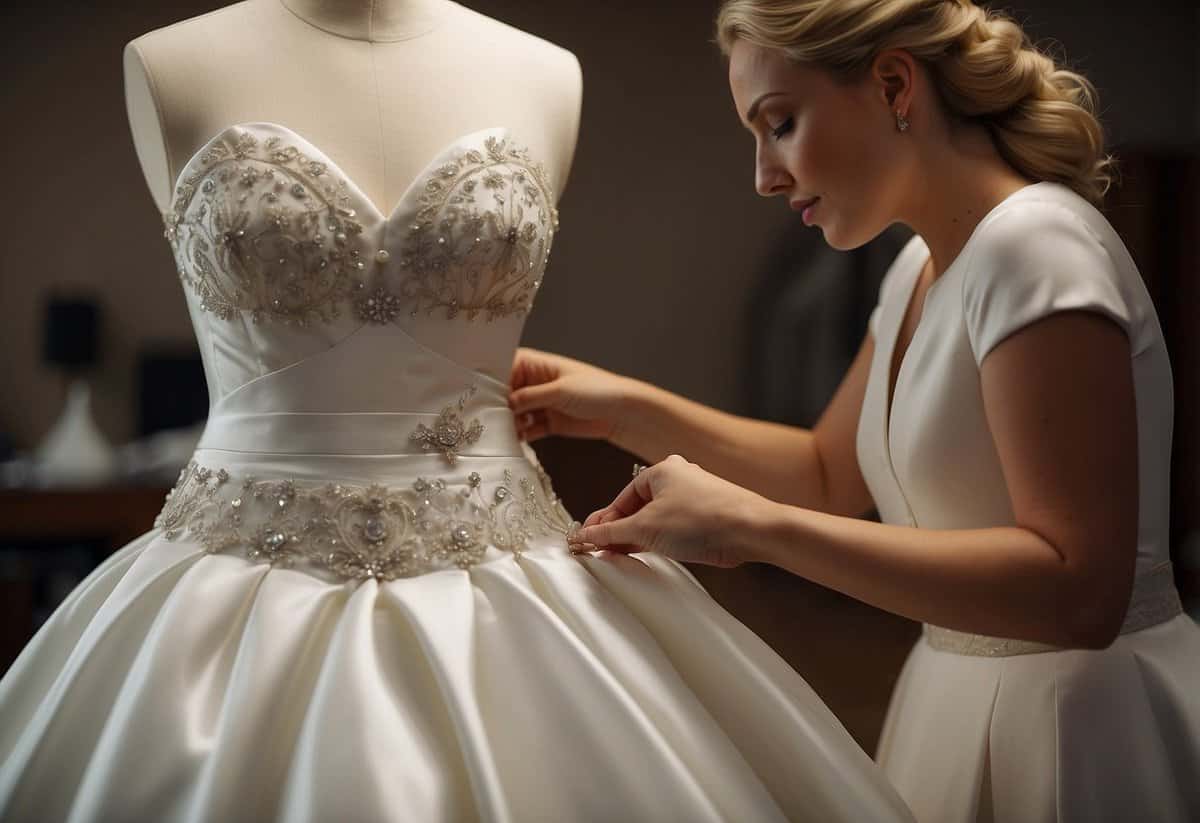
Wedding dress alterations are crucial to achieving the perfect fit for your special day. It’s important to know what changes can be made and why they are necessary to ensure your dress looks and feels right.
Common Types of Alterations
There are various common alterations you may need for your wedding dress. Basic hemming adjusts the length to suit your height, ensuring you don’t trip over the fabric.
Another frequent alteration includes taking in or letting out the sides. This change reshapes the gown to hug your body snugly without being too tight or loose.
You might also need the bustle added to lift the train for easier walking during the reception. Strap adjustments ensure they are comfortable and don’t slip off your shoulders. Lastly, adding or removing sleeves can transform the look of your dress.
Why Alterations Are Essential
Alterations ensure your wedding dress fits you perfectly and comfortably. A gown straight off the rack rarely fits anyone like a glove. Custom adjustments make sure it flatters your unique shape and enhances your natural beauty.
Wearing a dress that fits well prevents discomfort and allows you to move freely. On your wedding day, you’ll be sitting, standing, dancing, and hugging guests, so it’s vital the dress doesn’t restrict you.
Personalization is another reason for alterations. You might want to add personal touches like lace, beading, or different fabric types. These changes can make your dress unique and more reflective of your style.
Choosing the Right Tailor
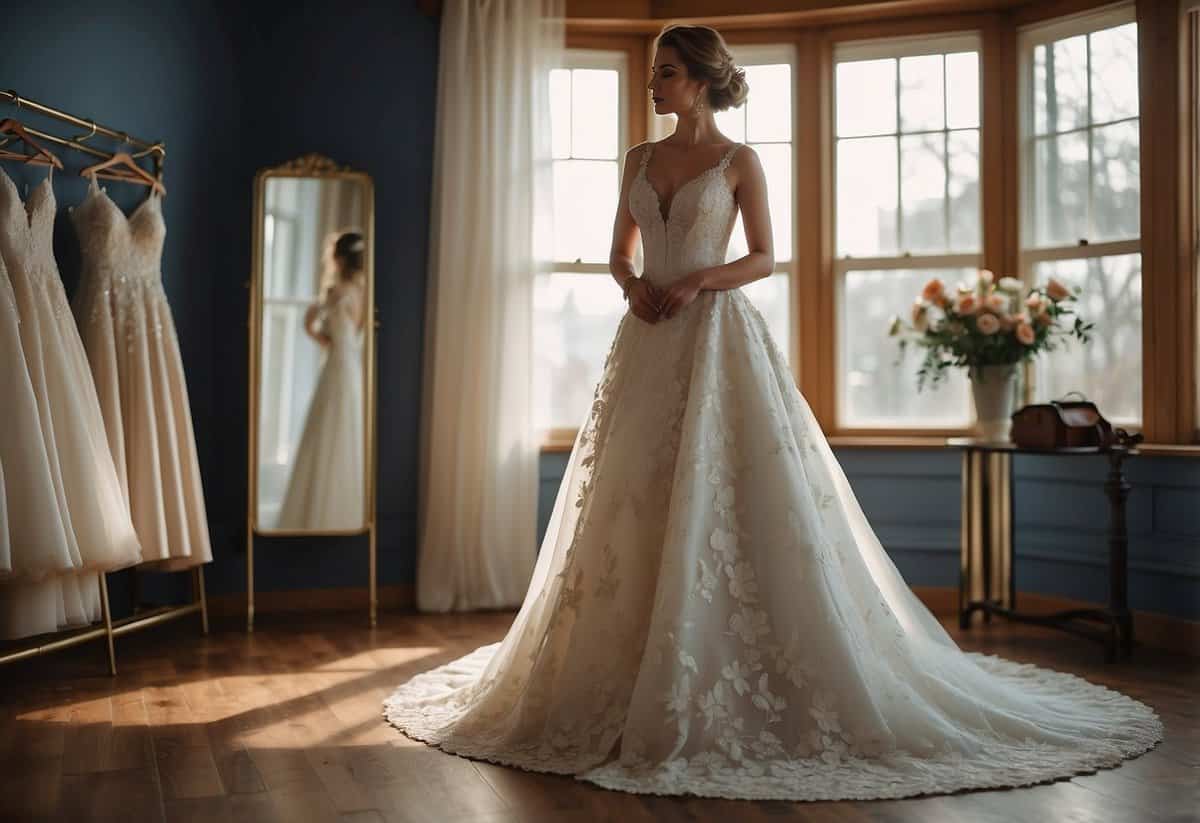
Finding the right tailor for your wedding dress is crucial. Focus on research and asking the right questions to ensure a perfect fit for your special day.
Research and Recommendations
Begin by seeking recommendations from friends, family, and bridal shops. Personal experiences are invaluable. Read reviews online and check the tailor’s portfolio to see their work.
Be sure to visit multiple tailors. Compare their experience in wedding dress alterations specifically. Look for tailors who specialize in bridal wear, as they understand the delicate fabrics and complex designs.
Consider the tailor’s location and availability. It’s best to choose someone nearby to avoid long trips for fittings. Check their schedule to ensure they can meet your deadlines comfortably.
Questions to Ask Your Tailor
When you visit, bring your dress and a list of questions. Start by asking about their experience with wedding dresses. Find out how many dresses they’ve altered and what types of fabrics they’ve worked with.
Ask about the timeline for your alterations. Make sure they understand your wedding date and can finish the work in plenty of time. Inquire about the cost of each alteration and if there are any additional fees.
Discuss the fitting process. How many fittings will you need? What should you bring to each fitting, such as shoes and undergarments? Getting clear answers will help you avoid surprises and ensure your dress fits perfectly on your wedding day.
Preparation Tips for Dress Fittings
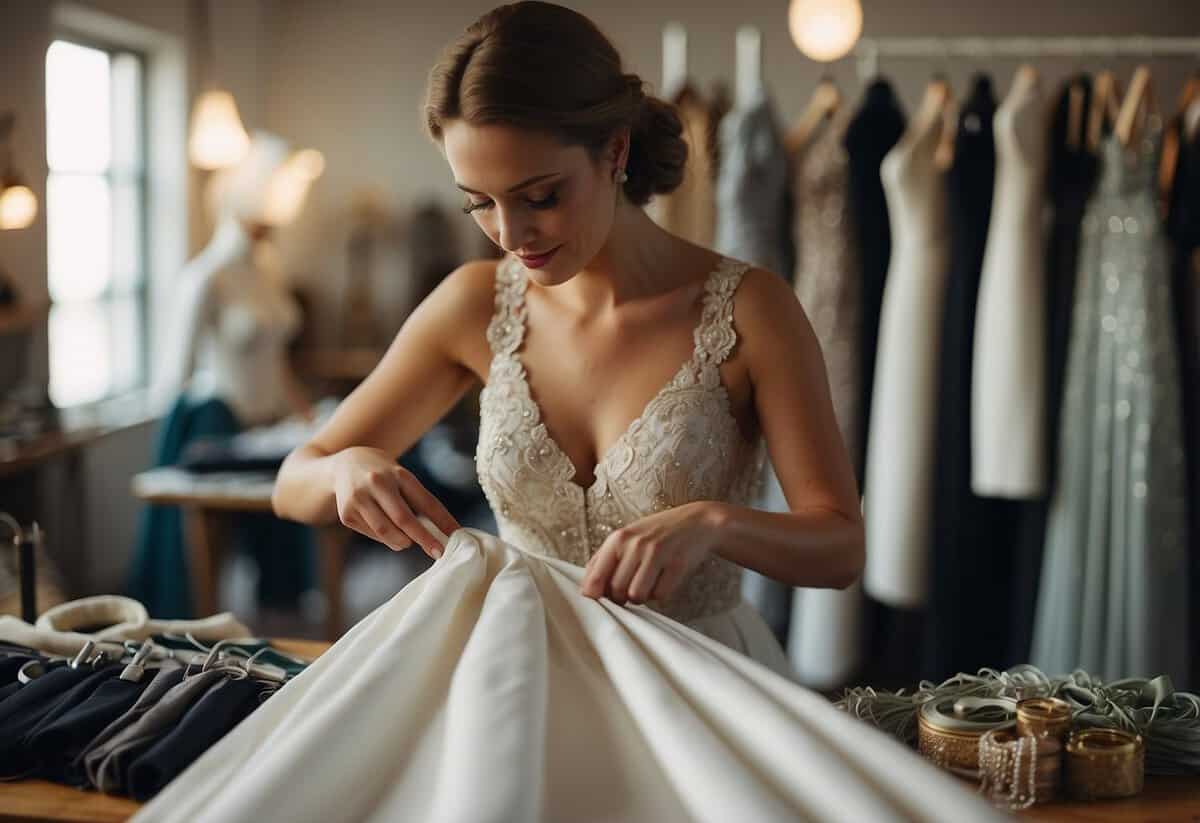
Getting ready for your wedding dress fittings is essential for a smooth process. You’ll need to know what to bring and how to schedule your alterations timeline to ensure everything fits perfectly.
What to Bring to Your Fitting
When you go for your fitting, take the shoes and undergarments you plan to wear on your wedding day. This helps your seamstress achieve the right length and fit.
Also, bring any accessories, like a veil or jewelry, to get a better sense of the final look. Having these items at the fitting ensures that everything coordinates well and you won’t face any surprises closer to the big day.
Scheduling Your Alterations Timeline
Start your alterations about two to three months before your wedding. This gives enough time without last-minute stress. Most brides need around three fittings.
Book your first fitting as soon as possible after getting your dress. The next fitting usually happens a month later, and the last one two weeks before the wedding. This timeline helps your dress fit perfectly and gives the seamstress time to make any final tweaks.


